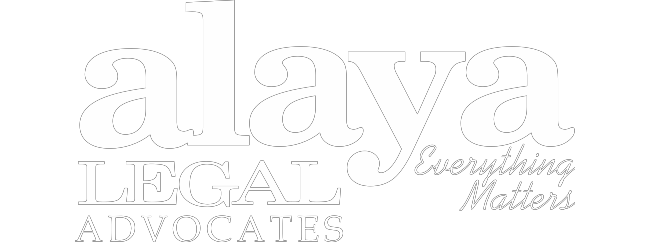| Date | Version | April 05, 2023| 2.0 |
| Keywords | ‘common carrier’, ‘contract carrier’, ‘Declaration’, ‘PNGRB’, ‘Authorization’, ‘natural gas pipeline’. |
| List of Legislation Referred. |
|
| Jurisdiction | Republic of India |
Introduction
Natural Gas Pipelines are, without a doubt, critical infrastructure. A robust pipeline infrastructure is necessary to ensure efficient delivery of natural gas to its industrial users and consumers. For more reasons than one, it is crucial to ensure that pipeline infrastructure is accessible to large numbers and redundancy is avoided. It only requires little imagination to understand the consequence if access to pipelines was controlled wholly by the owners, who are likely to be organizations with deep pockets and who may or may not engage in practices not conducive to competition and fair play. This is a complex issue, especially given that petroleum and natural gas marketing and distribution was initially confined only to a few public sector undertakings and thereafter included a few private players, and merits a separate study.
The Petroleum and Natural Gas Regulatory Board (‘The Board’) was established under the PNGRB Act through a notification by the Central Board on October 1, 2007 (‘appointed day’). The Board regulates the refining, processing, storage, transportation, distribution, marketing and sale of petroleum, petroleum products and natural gas, excluding the production of crude oil and natural gas. This write up draws focus on the process involved in authorization and declaration of a ‘natural gas pipeline’ under the 2008 Regulations.
Any entity that intends to lay, build, operate or expand a pipeline as a ‘common carrier’ or ‘contract carrier’ is required to obtain authorization under the PNGRB Act, by applying in writing to the Board. The PNGRB Act grants certain powers to the Board, including the power to declare an existing pipeline as a ‘common carrier’ or ‘contract carrier’ and regulate such a pipeline. The authorization in respect of a pipeline as granted by the Board to an entity, determines its status and the charges and tariff rates applicable to it. Therefore, the legal status of a natural gas pipeline is relevant.
The write up discusses the procedure of authorization and declaration of a natural gas pipeline as a common carrier or a contract carrier and the consequences that may follow if such procedures are not being followed or adhered to by the entities or the Board. The authorization and declaration of City Gas Distribution (‘CGD’) network and the technical criteria for the determination of a pipeline as a common carrier or contract carrier is outside the scope of this write up.
Common Carrier and Contract Carrier
- The terms ‘common carrier’ and ‘contract carrier’ have been defined under Section 2 of the PNGRB Act:
“(j) “common carrier” means such pipelines for transportation of petroleum, petroleum products and natural gas by more than one entity as the Board may declare or authorize from time to time on a non-discriminatory open access basis under subsection (3) of section 20, but does not include pipelines laid to supply—
- petroleum products or natural gas to a specific consumer; or
- crude oil;
Explanation.- For the purposes of this clause, a contract carrier shall be treated as a common carrier, if—
- such contract carrier has surplus capacity over and above the firm contracts entered into; or
(b) the firm contract period has expired.
…
(m) “contract carrier” means such pipelines for transportation of petroleum, petroleum products and natural gas by more than one entity pursuant to firm contracts for at least one year as may be declared or authorized by the Board from time to time under sub-section (3) of section 20;”
- The 2009 Regulations detail the common carrier and contract carrier system as under:
- Under the contract carrier system, the capacity above the authorized entity’s own requirement is made available to any other entity upon entering into a firm contract for the transportation of a volume of natural gas for a minimum of one year, subject to terms of applicable regulations and payment of natural gas pipeline tariff under the 2008 Tariff Regulations [i]
- Under the common carrier system, the capacity above the entity’s own requirement, is made available to any other entity upon entering into a contract for the transportation of a volume of natural gas for a period of less than one year, subject to terms of applicable regulations and payment of natural gas pipeline tariff under the 2008 Tariff Regulations. The available capacity shall be allocated to any entity on a non-discriminatory ‘first-come-first-served’ basis.[ii]
- It is to be noted that the definition of ‘contract carrier’ under the PNGRB Act specifies ‘transportation of petroleum, petroleum products and natural gas by more than one entity pursuant to firm contracts’. However, the 2009 Regulations do not specify the minimum number of entities required to have a firm contract for transportation of petroleum, petroleum products and natural gas in case of a contract carrier.
- The entity laying, building, operating, or expanding a pipeline for transportation of natural gas, if engaged in marketing natural gas as well, shall be required by the Board to comply with the affiliate code of conduct. The Board may also require the entity to separate the marketing activities and transportation activities, including ownership of the pipeline, within such period as may be allowed by the Board, and only within the said period shall the entity have the right of first use.[iii]
The Board
- Section 11 of the PNGRB Act lists the various functions to be performed by the Board. To declare and authorize natural gas pipelines as common carrier or contract carrier, the Board shall:
- authorize entities to lay, build, operate or expand a common carrier or contract carrier;[iv]
- declare pipelines as common carrier or contract carrier;[v]
- regulate access to common carrier or contract carrier to ensure fair trade and competition amongst entities;[vi]
- regulate transportation rates for common carrier or contract carrier.[vii]
- The Board shall keep a Petroleum and Natural Gas Register at its head office, which shall include the details of entities authorized for laying, building, operating, or expanding a common carrier.[viii]
- An entity may apply for authorization for laying, building, operating or expanding a common carrier or contract carrier in writing to the Board under the PNGRB Act.[ix] No entity shall lay, build, operate or expand any pipeline as a common carrier or contract carrier without obtaining authorization from the Board under the PNGRB Act.[x]
- The Board also may, on suo motto [sic] basis, form an opinion to lay, operate or expand a common carrier or contract carrier. In such a case, the intention of the Board may be made public and applications may be invited from the interested entities.[xi] The Board may select an entity in an objective and transparent manner as specified by regulations for such activities. [xii]
- Failure to obtain authorization to lay, build, operate or expand a pipeline as a common carrier or contract carrier under the PNGRB Act shall attract punishment with imprisonment for a term which may extend to three years or a penalty of twenty-five crore rupees or with both. If the contravention continues, an additional fine of upto ten lakh rupees for every such day of contravention may also be imposed.[xiii]
Authorization and Declaration Framework
- The 2008 Regulations define a ‘natural gas pipeline’ as,
“any pipeline including spur lines for transport of natural gas and includes all connected equipments and facilities, such as, compressors, storage facilities, metering units, etc. but excludes-
- dedicated pipeline laid to transport natural gas to a specific customer to meet his requirement and not for resale;
- pipelines in a city or local natural gas distribution network which are regulated by the Petroleum and Natural Gas Regulatory Board (Authorizing Entities to Lay, Build, Operate or Expand City or Local Natural Gas Distribution Networks) Regulations, 2008.”
- The 2008 Regulations state that an expression of interest shall be submitted to the Board by any entity desirous of laying, building, operating or expanding a natural gas pipeline. The Board also has the power to initiate a suo moto proposal inviting entities to participate in the process of selection of an entity for laying, building, operating or expanding natural gas pipeline.[xiv]
- The proposal by an entity desirous of laying, building, operating or expanding a natural gas pipeline is governed by Regulation 4(1) of the 2008 Regulations, which mandates submission of such application in the manner specified under Schedule A of the 2008 Regulations.
- For entities that had obtained authorization from the Central Government for laying, building, operating or expanding a natural gas pipeline before the appointed day (i.e., October 01, 2007),
- the entity shall submit the relevant information alongside supporting documents to the Board as specified in the form as per Schedule H to the 2008 Regulations.[xv]
- The entity shall abide by the technical standards, and specifications, including safety standards, under the relevant regulations.[xvi]
- The Board shall approve the tariff to be charged as per the 2008 Tariff Regulations.[xvii]
- If the status of the natural gas pipeline has not been specified as a common carrier or contract carrier, the Board may intervene and declare such pipeline as common carrier or contract carrier.[xviii]
- An entity laying, building, operating or expanding natural gas pipeline before the appointed day without obtaining Central Government authorization shall apply for a grant of authorization to the Board in the form as per Schedule I to the 2008 Regulations. The Board may grant authorization in the form as per Schedule D to the 2008 Regulations.
- The 2009 Regulations also apply to all entities covered under the 2008 Regulations. The objectives for the declaration of natural gas pipeline as a common carrier or contract carrier have been listed under the 2009 Regulations as under:
- To promote customer interest which is best served by promoting competition, avoiding infructuous investments by optimum utilization of infrastructure of natural gas pipelines.[xix]
- To develop competitive gas markets by incentivizing independent shippers of natural gas to enter into contract carrier and common carrier arrangements.[xx]
- The common carrier and contract carrier capacity available in the natural gas pipeline shall be published by the entity laying, building, operating or expanding natural gas pipelines on its website in accordance with the procedure established under the 2008 Access Code Regulations.
- The manner of allocation of capacity shall be done by the entity laying, building, operating or expanding natural gas pipelines in a transparent manner.[xxi] and any entity booking such capacity may be allowed to assign or trade such capacity in the open market.[xxii]
- Regulation 10 of the 2009 Regulations lays down the procedure for declaring an existing pipeline for transportation of natural gas as a common or contract carrier. Such a declaration shall take place if the Board is of the opinion that it is necessary or expedient to do so,
“(a)it may give wide publicity of its intention to do so by inviting objections and suggestions within a period of not less than three weeks from the date of invitation;
(b)the Board may also provide the entity owning the natural gas pipeline an opportunity of being heard within a minimum notice period of fifteen days from the close of the invitation for objections and suggestions.”
It is to be noted that Section 20(2) of the PNGRB Act uses the expression ‘shall’ instead of ‘may’ with respect to providing an opportunity to be heard to the entity owning the pipeline or the network.
- Once the objections and suggestions are received, and the entity owning the natural gas pipeline is given the opportunity to be heard, the pipeline may be declared as a common or contract carrier. The 2009 Regulations also permit an entity to, on a suo moto basis, apply to the Board and seek declaration of a natural gas pipeline as a common carrier or contract carrier.[xxiii]
- Once the procedure with respect to authorization and declaration have been followed, the Board, through a notification under Section 20(3) of the PNGRB Act, may declare a pipeline as a common carrier or contract carrier or authorize an entity to lay, build, operate or expand a pipeline as a common carrier or contract carrier.
Arguably, there is scope for natural monopoly in the case of bulk transportation as the segment is capital intensive; there might arise instances where these procedures, for whatever reason, may not be adhered to by the concerned person(s). Certain decided cases where the declaration procedure was brought into question are discussed below..
Mahanagar Gas Ltd. v. PNGRB[xxiv]
- In a case before the Appellate Tribunal For Electricity (‘the Tribunal’), ONGC applied for a pipeline to be declared as a dedicated pipeline. ONGC was directed by the Board to apply under the 2008 Regulations and seek a declaration as a ‘common carrier’. The Board stated that the pipeline could not be declared as a ‘dedicated pipeline’ as it was not a ‘dedicated pipeline’ within the meaning of Regulation 2(1)(f)(i) of the 2008 Regulations.
- A fresh application was filed by ONGC with the Board for acceptance of the Central Government’s authorization under Regulation 17 of the 2008 Regulations as a ‘common carrier’. Consequently, the Board then granted such acceptance of authorization.[xxv]
- The authorization enabled ONGC to apply for the fixation of transportation tariff under Section 22 of the PNGRB Act. The Board passed an order for such tariff being fixed and to be applied retrospectively as well.[xxvi]
- Following this, a debit note was raised by ONGC on GAIL for recovery of the retrospective tariff that had been fixed by the Board. The demand in this debit note was passed on to the Appellant (being a GAIL subsidiary) by GAIL.[xxvii] The Appellant contested the demand on the basis that it became aware of the direction by the Board to ONGC to apply for a declaration of pipeline as a ‘common carrier’, the application made by ONGC in this regard and the acceptance of authorization granted by the Board only during the proceedings before the Board and was never afforded an opportunity to object to such a declaration.[xxviii]
- The Appellant argued that since the provisions of Sections 20 and 21 of the PNGRB Act were not followed by the Board, such a declaration was erroneous.[xxix] However, in a rejoinder to the reply of ONGC, the Appellant had stated that the Order whereby the pipeline was declared a common carrier by the Board was not being challenged by the A
- The Tribunal decided to only look into the question of tariff determination and deemed the declaration to be valid, stating,
“We, however, have not gone into depth of the regulations and the Section of the PNGRB Act as referred to by ONGC in its arguments saying that Uran-Trombay pipeline is not a dedicated pipeline but a common carrier pipeline since no party has declined to accept that the Uran-Trombay pipeline is a common carrier pipeline as declared by the Board.”
It would appear that the failure to follow the procedure for declaring an existing pipeline as a common or contract carrier did not have any consequence in this case merely because the parties to the dispute did not contest the manner in which such a declaration had taken place. The Tribunal only dealt with the issue pertaining to the determination of tariff, in the process, reducing the importance and currency of the procedures that have been laid down for such a declaration.
Gujarat Gas Company Limited v. PNGRB [xxx]
- The Tribunal looked into whether a pipeline could be automatically or in other words, deemed to be converted to a common carrier.
- The Appellant was granted authorization by the Central Government upon application for a pipeline from Hazira to Ankleshwar.[xxxi] One end of this pipeline was used to lay down the AMJH pipeline that catered to only one customer initially. Later, it started to cater to multiple customers. Therefore, the character of the pipeline had now changed from a dedicated pipeline to a sub-transmission line. The above events took place before the appointed day (i.e., October 01, 2007).
- Once the PNGRB Act came into effect, upon grant of authorization, Hazira to Ankleshwar pipeline was granted the status of a common carrier for the transportation of liquified natural gas. The Appellant had only specified the Haizira-Ankleshwar pipeline in such application and had excluded the AMJH pipeline from being considered a natural gas pipeline.
- Later, the Appellant filed an application for authorization of the City Gas Distribution (‘CGD’) before the Board. The Appellant included the sub-transmission line as part of its CGD network. On July 5, 2012, the Hazira to Ankleshwar pipeline received authorization from the Board under the 2008 Regulations, followed by authorization granted to the CGD network under the 2008 CGD Regulations. [xxxii]
- The Appellant argued that specific clarifications were sought by the Board for inclusion of the sub-transmission line as part of the Appellant’s CGD network and not as part of the Hazira-Ankleshwar pipeline.
- The Board argued that the sub-transmission line catered to only one customer as a dedicated line before the PNGRB Act came into force. The character of such a pipeline changed to a common carrier once it started catering to multiple customers. Therefore, before the PNGRB Act came into force, the character of this line had changed to a spur line of the common carrier Hazira-Ankleshwar Pipeline and such a spur line comes within the definition of natural gas pipeline under 2008 Regulations. [xxxiii]
- The Board submitted that the sub-transmission line that had been authorized by it previously as a part of the CGD network shall be treated as a common carrier pipeline as authorization of the Hazira-Ankleshwar shall also include authorization of the sub-transmission pipeline as a common carrier pipeline.[xxxiv]
- The Tribunal opined that the meaning of the expression “natural gas pipeline” under the 2008 Regulations expressly excludes pipelines that form part of the CGD network.[xxxv] The Board had not yet declared the sub-transmission line as a common carrier or part of the Hazira Ankleshwar Pipeline.
- The Tribunal went on to hold that granting the status of ‘common carrier’ involves determination and declaration by the Board, it cannot be simply assumed. The Board has to follow the procedures specified under Section 20 of the PNGRB Act.[xxxvi] There cannot be an automatic conversion of a pipeline to the status of a common carrier.
- As far as declaring a pipeline to be a common carrier or contract carrier is concerned, the Tribunal looked into the 2009 Regulations and held,
“The power to declare a pipeline to be a common carrier or contract carrier lies with the Board and is controlled, inter alia, by PNGRB (Guiding Principles for Declaring or Authorizing Natural Gas Pipeline as Common Carrier or Contract Carrier) Regulations, 2009, Regulation 10 being the specific clause respecting the procedure to be followed, the opinion of the Board that “it is necessary or expedient to” so “declare an existing pipeline for transportation of natural gas”, whether on its own motion or on request of the concerned entity, being the pre-requisite, giving of “wide publicity” and “inviting objections and suggestions” and affording “opportunity of being heard” making the process transparent and compliant with rules of natural justice.”
- The Tribunal also pointed out the Order of PNGRB in the case of Saint Gobain Pvt. Ltd. v. Gujarat Gas Limited[xxxvii] that dealt with the declaration of a CGD network as a common carrier. In this case, the Board had held that, “the nature of CGD network does not change unless it is declared as common carrier after following the procedure as laid down in Section 20 of the PNGRB Act.”
Thus, the status of such pipelines and CGD networks is decided by following the procedure laid down under the PNGRB Act and Regulations; the same shall not be deemed or assumed based on the nature of the operations being conducted.
View Point
- Declaration of a pipeline as a common or contract carrier has significant implications in terms of tariff determination. Arguably, the status of a ‘captive pipeline’ is not clear and therefore, questions regarding regulation thereof and tariff determination remain unanswered.
- Arguably, the nexus between ownership, operation and access of natural gas pipelines requires deeper analysis. Legal unbundling of the marketing and transportation activities is likely to be beneficial for better transparency in the allocation of capacity with respect to natural gas pipelines.
[i] Reg. 6, Petroleum and Natural Gas Regulatory Board (Guiding Principles for Declaring or Authorizing Natural Gas Pipeline as Common Carrier or Contract Carrier) Regulations, 2009.
[ii] Reg. 5, Petroleum and Natural Gas Regulatory Board (Guiding Principles for Declaring or Authorizing Natural Gas Pipeline as Common Carrier or Contract Carrier) Regulations, 2009.
[iii] Sec. 21, Petroleum and Natural Gas Regulatory Board Act, 2006.
[iv] Sec. 11(c), Petroleum and Natural Gas Regulatory Board Act, 2006.
[v] Sec. 11(d), Petroleum and Natural Gas Regulatory Board Act, 2006.
[vi] Sec. 11(e)(i), Petroleum and Natural Gas Regulatory Board Act, 2006.
[vii] Sec. 11(e)(ii), Petroleum and Natural Gas Regulatory Board Act, 2006.
[viii] Sec. 14(b)(i), Petroleum and Natural Gas Regulatory Board Act, 2006.
[ix] Sec. 17(1), Petroleum and Natural Gas Regulatory Board Act, 2006.
[x] Sec. 16(a), Petroleum and Natural Gas Regulatory Board Act, 2006.
[xi] Sec. 19(1), Petroleum and Natural Gas Regulatory Board Act, 2006.
[xii] Sec. 19(2), Petroleum and Natural Gas Regulatory Board Act, 2006.
[xiii] Sec. 48, Petroleum and Natural Gas Regulatory Board Act, 2006.
[xiv] Reg. 4, The Petroleum and Natural Gas Regulatory Board (Authorizing Entities to Lay, Build, Operate or Expand Natural Gas Pipelines) Regulations, 2008.
[xv] Reg. 17(1), The Petroleum and Natural Gas Regulatory Board (Authorizing Entities to Lay, Build, Operate or Expand Natural Gas Pipelines) Regulations, 2008.
[xvi] Reg. 17(2), The Petroleum and Natural Gas Regulatory Board (Authorizing Entities to Lay, Build, Operate or Expand Natural Gas Pipelines) Regulations, 2008.
[xvii] Reg. 17(3), The Petroleum and Natural Gas Regulatory Board (Authorizing Entities to Lay, Build, Operate or Expand Natural Gas Pipelines) Regulations, 2008.
[xviii] Reg. 17(5), The Petroleum and Natural Gas Regulatory Board (Authorizing Entities to Lay, Build, Operate or Expand Natural Gas Pipelines) Regulations, 2008.
[xix] Reg. 4(a), Petroleum and Natural Gas Regulatory Board (Guiding Principles for Declaring or Authorizing Natural Gas Pipeline as Common Carrier or Contract Carrier) Regulations, 2009.
[xx] Reg. 4(b), Petroleum and Natural Gas Regulatory Board (Guiding Principles for Declaring or Authorizing Natural Gas Pipeline as Common Carrier or Contract Carrier) Regulations, 2009.
[xxi] Reg. 7(c), Petroleum and Natural Gas Regulatory Board (Guiding Principles for Declaring or Authorizing Natural Gas Pipeline as Common Carrier or Contract Carrier) Regulations, 2009.
[xxii] Reg. 7(b), Petroleum and Natural Gas Regulatory Board (Guiding Principles for Declaring or Authorizing Natural Gas Pipeline as Common Carrier or Contract Carrier) Regulations, 2009.
[xxiii] Reg. 10(3) Petroleum and Natural Gas Regulatory Board (Guiding Principles for Declaring or Authorizing Natural Gas Pipeline as Common Carrier or Contract Carrier) Regulations, 2009.
[xxiv] MANU/ET/0095/2019.
[xxv] Para 13, Mahanagar Gas Ltd. v. PNGRB, MANU/ET/0095/2019.
[xxvi] Para 15, Mahanagar Gas Ltd. v. PNGRB, MANU/ET/0095/2019.
[xxvii] Para 17, Mahanagar Gas Ltd. v. PNGRB, MANU/ET/0095/2019.
[xxviii] Para 14, Mahanagar Gas Ltd. v. PNGRB, MANU/ET/0095/2019.
[xxix] Para 14, Mahanagar Gas Ltd. v. PNGRB, MANU/ET/0095/2019.
[xxx] MANU/ET/0017/2021.
[xxxi] Para 3.8, Gujarat Gas Company Limited v. PNGRB, MANUT/ET/0017/2021.
[xxxii] Para 83, Gujarat Gas Company Limited v. PNGRB, MANUT/ET/0017/2021.
[xxxiii] Para 4.1.2, Gujarat Gas Company Limited v. PNGRB, MANUT/ET/0017/2021.
[xxxiv] Para 5.1, Gujarat Gas Company Limited v. PNGRB, MANUT/ET/0017/2021.
[xxxv] Para 83, Gujarat Gas Company Limited v. PNGRB, MANUT/ET/0017/2021.
[xxxvi] Para 101, Gujarat Gas Company Limited v. PNGRB, MANUT/ET/0017/2021.
[xxxvii] Case no. Legal/156/2015, Petroleum and Natural Gas Regulatory Board.




























